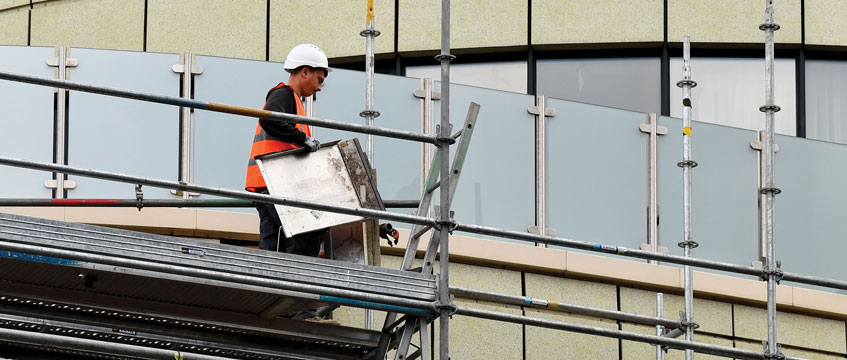“Today marks another significant step towards righting the wrongs of the past and protecting innocent leaseholders, who are trapped in their homes and facing unfair and crippling costs.”
Those were the words of housing secretary Michael Gove, who on 30 January 2023 invited developers to sign the government’s newly published “developer remediation contract” by 13 March 2023. Developers had been negotiating the terms of the contract with the Department for Levelling Up, Housing and Communities since last summer, with developers raising particular concerns around their potential liability for the cost of fixing “non-life-critical” defects.
While it is unclear which developers have been asked to sign the contract, the government’s expectation is that all signatories of the “building safety repairs pledge” – along with other residential developers who have relevant defects in their legacy projects – will sign.
Among other things, the contract will require developers to:
- take responsibility for all necessary work to address life-critical fire safety defects arising from the design and construction of buildings 11m and over in height or at least five storeys tall that they developed or refurbished over the past 30 years in England;
- keep residents in those buildings informed on progress; and
- reimburse taxpayers where public money has been used to fix unsafe buildings.
Severe consequences
In setting its six-week deadline for developers to sign the contract, the government has warned of significant consequences for those that fail to do so. Since the Building Safety Act 2022 was enacted last April, the government has made no secret of its intention to name and shame those developers that do not take urgent and appropriate action to address fire safety defects, and there is now a clear indication of the sanctions for non-compliance and how they will be implemented.
Further, under a new Responsible Actors Scheme set to be introduced this spring, the secretary of state will have the power to prevent non-complying developers from undertaking development and obtaining building control approval.
The government’s latest missive – and the 2022 Act in general – affects the whole residential development sector and not just the signatories to the building safety repairs pledge. For example:
- Developers that do not commit to rectifying relevant defects in their legacy projects will run the risk of being refused planning permission and/or building control sign-off for their future schemes. This covers all multi-occupancy residential buildings (11m and over in height or at least five storeys tall) including student accommodation and social housing.
- It does not matter if a developer has disposed of its interest in a relevant development or if the development was carried out through a special purpose vehicle. If the building was completed within the extended limitation period, the original developer and any associated companies will potentially be on the hook for the remediation costs.
- Building owners are responsible, in the first instance, for carrying out relevant investigations and ensuring that their buildings are safe for occupation. While they may have claims against the original developer and others for the cost of remedial works, they need to take steps now to ensure the safety of their buildings and residents.
- Management companies are, in practice, likely to be responsible for procuring the relevant investigations and remedial works, and communicating with residents and the relevant authorities.
- Institutional leaseholders – eg those that own a number of flats in a particular block – need to be aware that they may be called on to contribute towards the cost of any necessary remedial works.
What next?
While the government’s latest announcement has drawn significant attention from across the development sector and beyond, the regulatory landscape is constantly shifting and there are still a number of uncertainties as we enter the final implementation phase of the 2022 Act.
For example, discussions regarding removing the current 11m/five-storey threshold altogether are ongoing, as are deliberations about expanding the definition of “relevant buildings” to include certain non-residential buildings such as hotels. It remains to be seen whether these changes will be implemented.
In the meantime, and despite the government’s rhetoric, it also remains to be seen how much comfort this latest announcement will actually provide to leaseholders. While the government is insistent that non-compliant developers will have nowhere to hide, significant concerns remain. For example:
- Leaseholders are unlikely to benefit from the scheme where the developer of their building either no longer operates in the market or declines to participate.
- Developers who sign the contract are not placed under an absolute obligation to enter into a remediation works contract with the “responsible entity” (the owner of the freehold or superior leasehold). The extent of their obligation is only to use reasonable endeavours to do so.
- Even where developers do commit to the remediation of life-critical fire safety defects, leaseholders may still endure long waits for inspections, surveys and works to be undertaken owing to contractual wrangling and supply chain constraints.
Notwithstanding these concerns, the government’s latest announcement will be seen as a step in the right direction for long-suffering leaseholders, who will be keen to see the swift implementation of the scheme.
Investors and developers in the residential sector are unlikely to be as optimistic. Against the backdrop of a significant housing shortage in the UK, the government’s announcement may be seen as another roadblock to the provision of new housing.
The extensive regulation of high-rise residential development is likely to see developers focusing on less risky low-rise residential developments or non-residential developments altogether, leaving a dent in the government’s growth agenda.
Christian Charles is a partner and Oliver Tobin is a senior associate at Fladgate LLP








